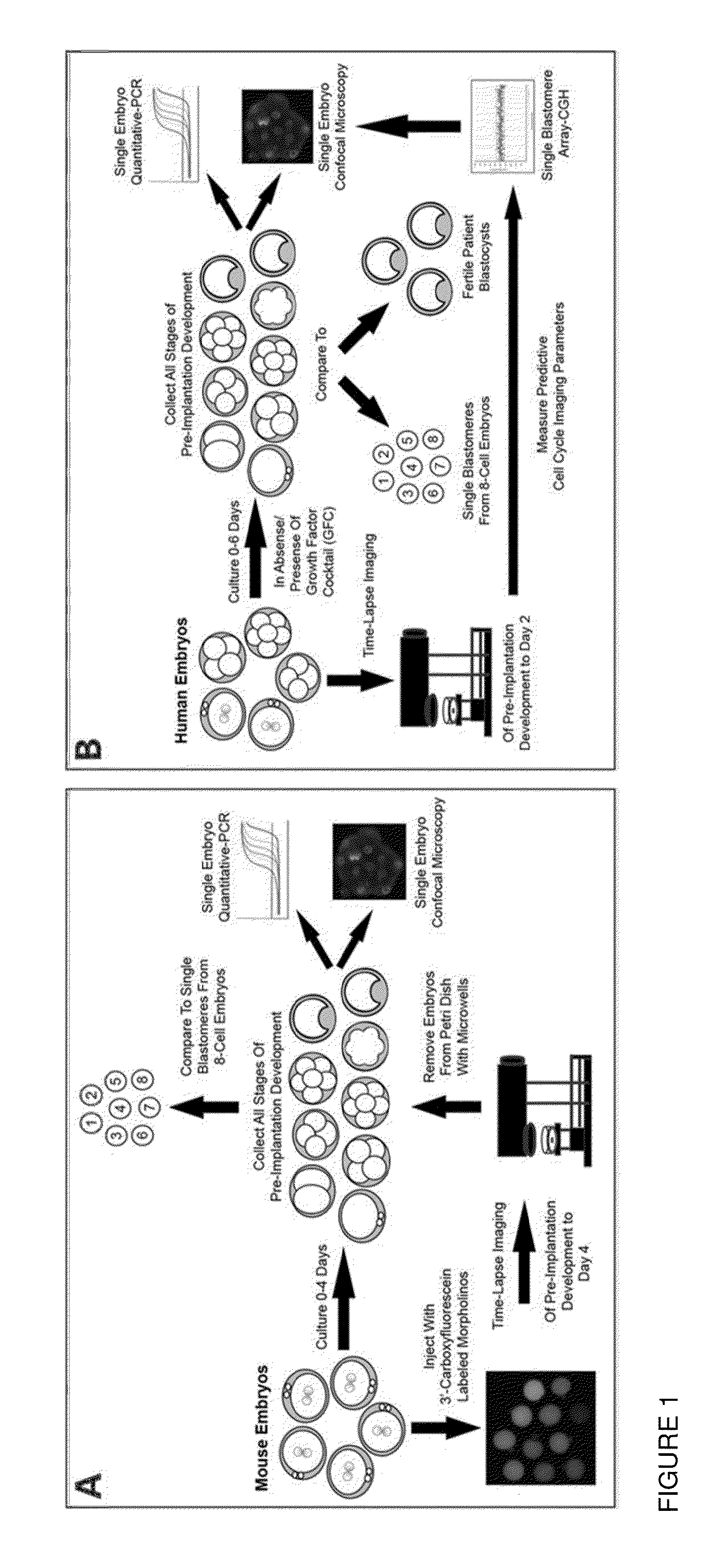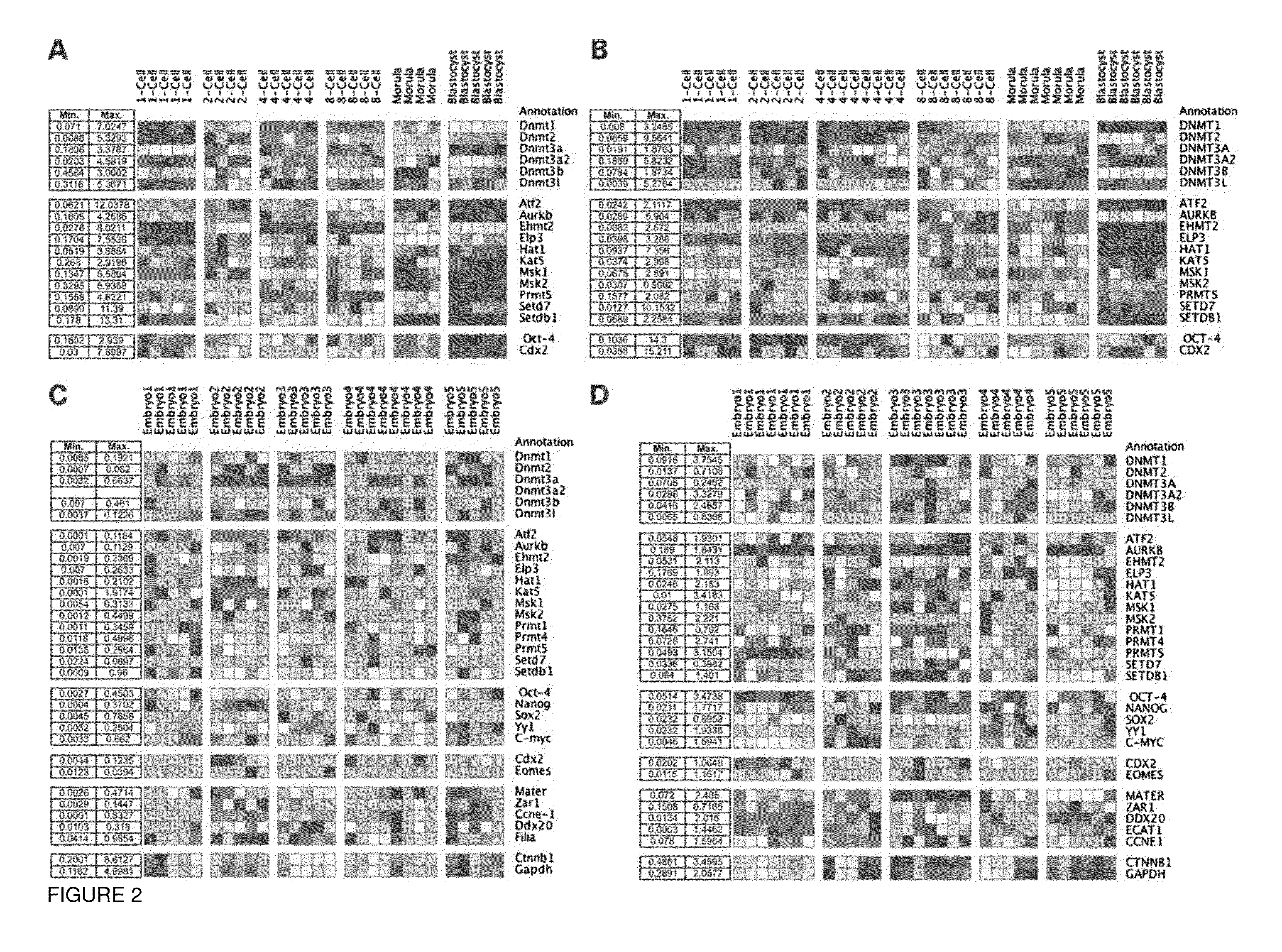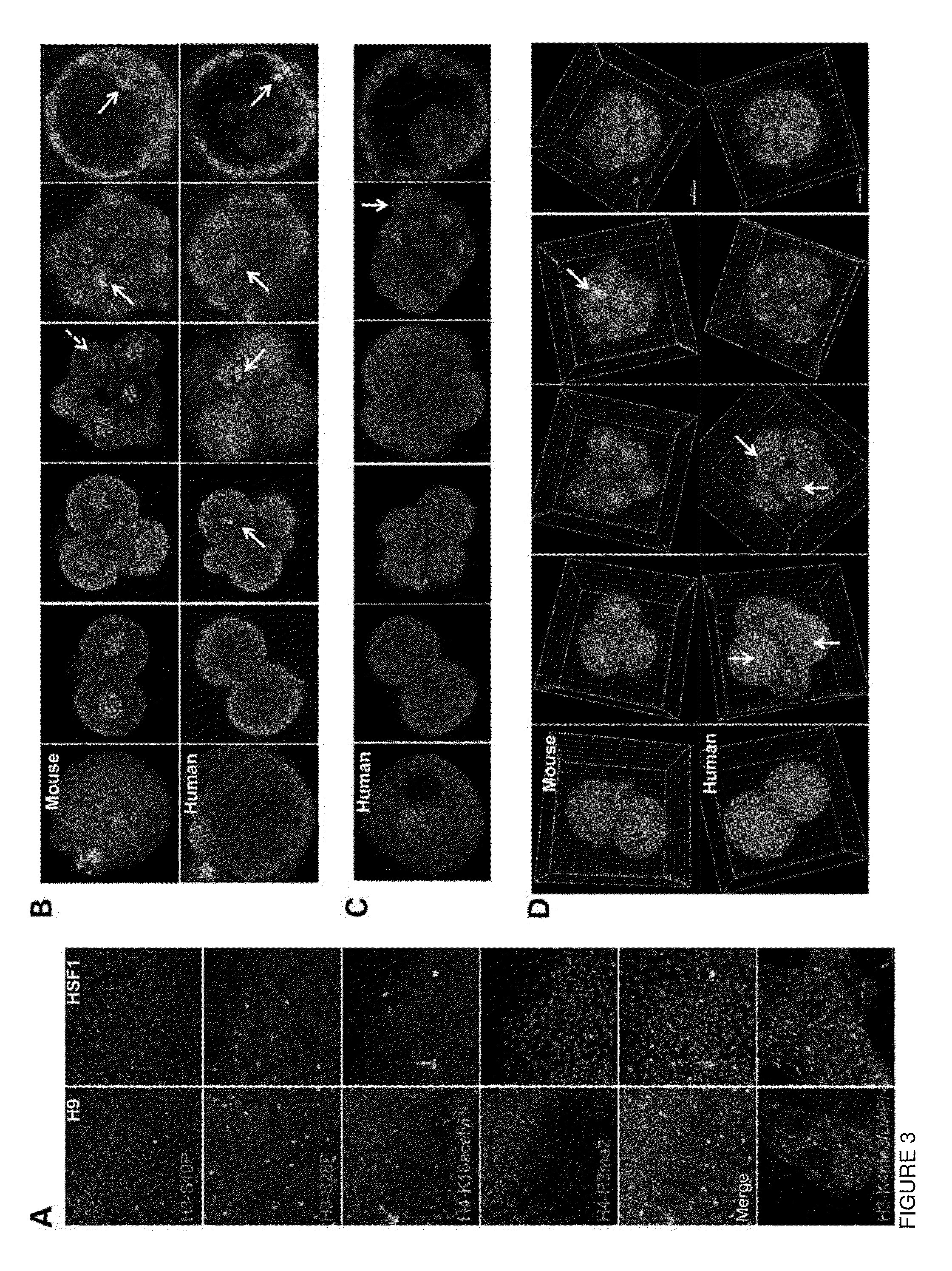Markers for the detection of human embryo developmental quality
- Summary
- Abstract
- Description
- Claims
- Application Information
AI Technical Summary
Benefits of technology
Problems solved by technology
Method used
Image
Examples
example 1
Implications of Differential Epigenetic Expression Patterns in Mouse and Human Embryonic Blastomeres
[0062]The importance of proper epigenetic regulation during pre-implantation development remains largely unknown. Here, we compared expression of key mediators of DNA methylation and histone modifications between mouse and human embryos, embryos from fertile and infertile couples, and following growth factor supplementation. We observed that while mouse embryos exhibited sub-compartmentalization of certain histone modifications between morula and blastocyst stages, differential histone modification expression was detected earlier in human embryos at the 4-8-cell stage. Likewise, differences were also observed between embryos from fertile and infertile couples and in response to growth factor supplementation. Finally, we demonstrate by time-lapse imaging that reduced expression of the histone-modifying enzyme, Msk2, resulted in embryo arrest at the cleavage-stage and was associated wit...
PUM
| Property | Measurement | Unit |
|---|---|---|
| Gene expression profile | aaaaa | aaaaa |
Abstract
Description
Claims
Application Information
 Login to View More
Login to View More - R&D
- Intellectual Property
- Life Sciences
- Materials
- Tech Scout
- Unparalleled Data Quality
- Higher Quality Content
- 60% Fewer Hallucinations
Browse by: Latest US Patents, China's latest patents, Technical Efficacy Thesaurus, Application Domain, Technology Topic, Popular Technical Reports.
© 2025 PatSnap. All rights reserved.Legal|Privacy policy|Modern Slavery Act Transparency Statement|Sitemap|About US| Contact US: help@patsnap.com



